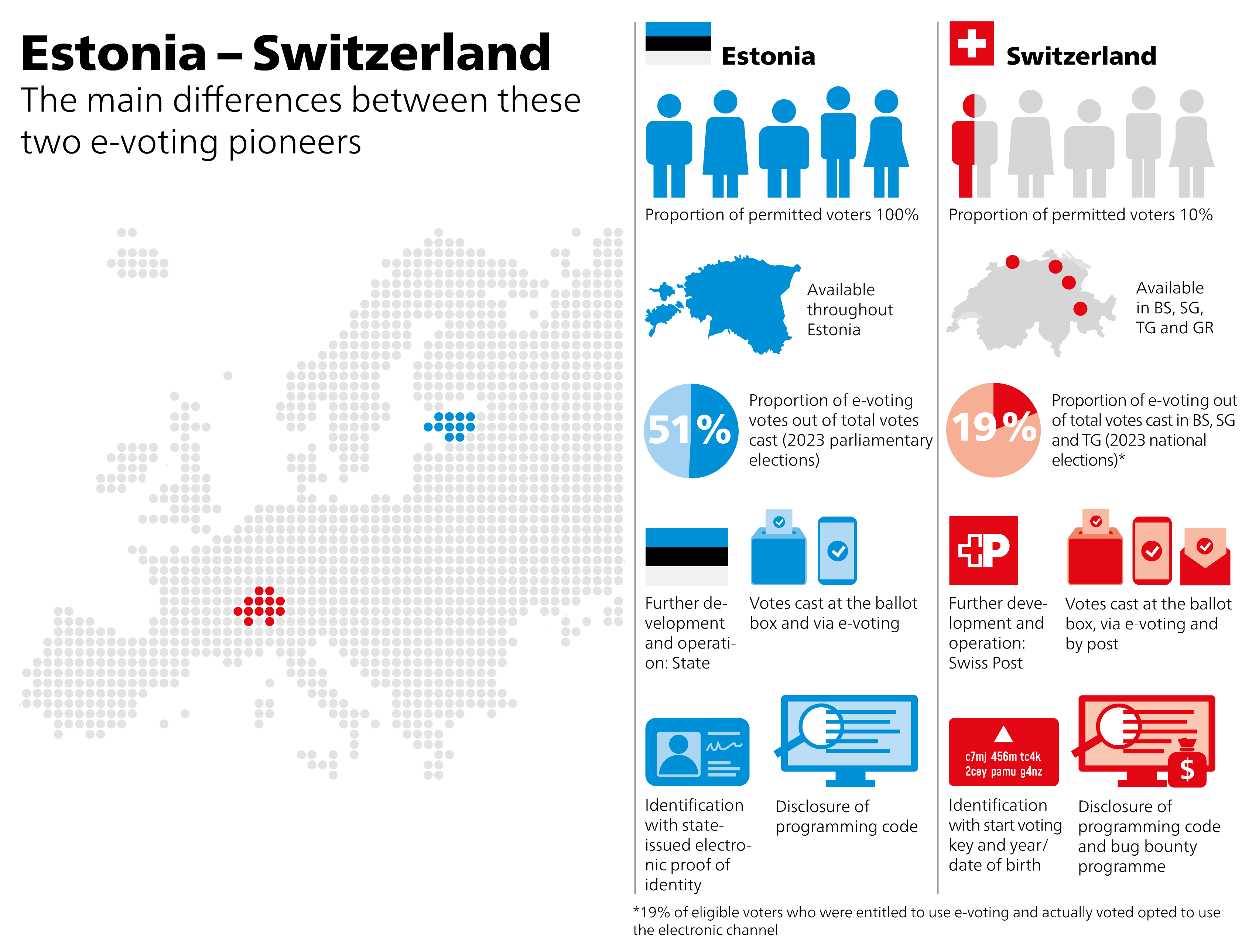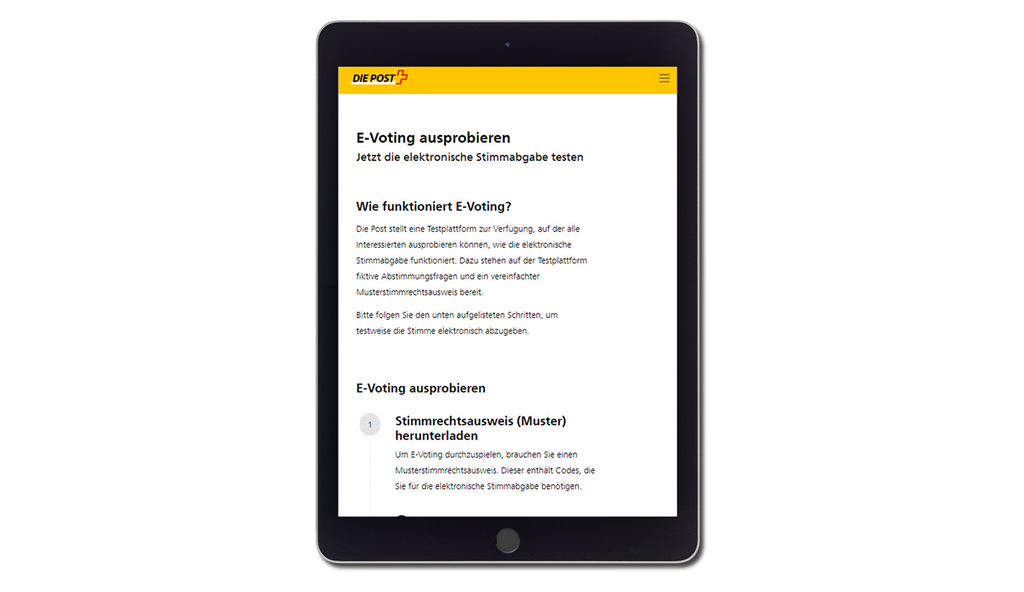Estonia is a pioneer in the field of digitization. The country regularly occupies the top ranks in the European Commission’s eGovernment Benchmark. For example, for 20 years, the small Baltic nation has been assigning a state digital identity to each of its 1.3 million residents.
Switzerland is less well positioned in e-government. The same EU study shows that Swiss authorities have some catching up to do when it comes to their digital services and processes: the country came in 28th out of 35 in the current study.
However, like Estonia, Switzerland is a pioneer in e-voting on the international stage. The first cantons started trials of electronic voting as early as 2004. The autumn 2023 elections resulted in a successful premiere: in the last Swiss federal elections, Swiss Post’s system enabled fully verifiable e-voting for the first time. A total of 4,480 voters in the Canton of Basel-Stadt. St. Gallen and Thurgau voted electronically, with mostly Swiss citizens living abroad and a small number of voters resident in Switzerland using the system. As a percentage, this means that 19 percent of voters who were eligible for e-voting also voted electronically. By comparison, in Estonia, where all eligible voters can use e-voting, more than 300,000 people cast their votes digitally in the parliamentary elections in 2023. This was the first time that more than half of the votes counted were received digitally.
How did Estonia achieve this high voter turnout via e-voting? Arne Koitmäe, Head of the Estonian State Election Office, explains over the phone: “There are several reasons for this. One of them is doubtless the trust in the system, which has grown over the years. But the population has certainly also noticed that it is much more convenient to vote online than to go to an election office on voting day. Not least of all, many government services in Estonia are digitized. People in Estonia have grown accustomed to using government services online.”

Arne Koitmäe, Head of the Estonian State Election Office
Not many countries offer an electronic voting channel – Estonia and Switzerland are both pioneers in this field. Are the Baltic state’s e-voting and the Swiss model similar? Below is a comparison of the main points:
- E-voting users: In Estonia, all eligible voters are free to choose whether they want to vote electronically or place their ballot paper in the ballot box on election day. In Switzerland, the legal basis stipulates that a maximum of 10 percent of voters are authorized to use e-voting during the trial operation.
- Identification: In Estonia, voters log in to the voting platform with their e-ID. In Switzerland, voters log in with a unique code that can be found on their voting card, which is sent by post. They also enter their year or date of birth, depending on the canton.
- Legal basis: After over 300 successful tests on various systems, e-voting was halted in Switzerland in 2019 due to security concerns. The Confederation subsequently increased the requirements for e-voting systems. These include higher technical specifications for systems. There is also a legal basis in Estonia, but no defined technical details.
- Security checks: In both countries, the system’s program code is disclosed. This allows experts to check the system and report vulnerabilities. In Switzerland, it is a legal requirement that those who successfully report such findings receive a reward. As a system provider, Swiss Post runs a bug bounty programme with rewards of up to 250,000 francs per finding. Estonia does not run a reward programme.
- Individual verifiability: When a voter in Switzerland submits their ballot paper electronically, they are asked to compare the choice return codes before casting their final vote. This enables them to ensure that their vote reaches the electronic ballot box as intended. In Estonia, voters can also check the correctness of their vote. This check is carried out in a separate app after voting.
- System provider: In Estonia, the state is responsible for the further development and operation of the e-voting system. In Switzerland, the principle of free competition applies. Swiss Post is currently the sole provider of an e-voting system in Switzerland.
Other differences between the two countries arise from the differences in their democratic systems. In Switzerland, four federal votes are held every year and eligible voters can participate in other votes and elections at the cantonal and municipal level. In Estonia, there are no votes on substantive bills but democratic participation and therefore also e-voting are limited to parliamentary elections. In Estonia, unlike Switzerland, there is no postal voting.
Below, you can see all the main differences at a glance




